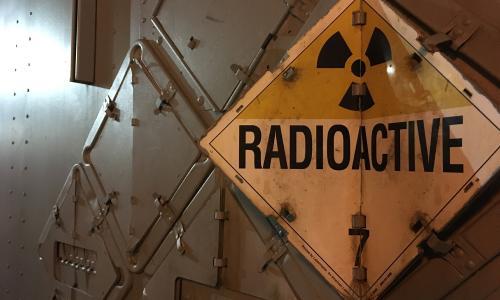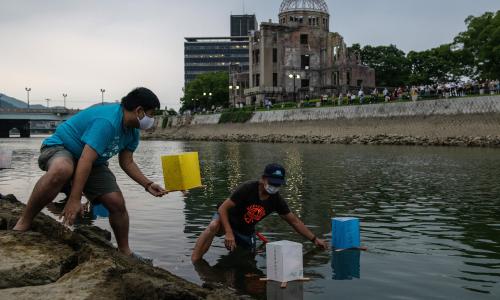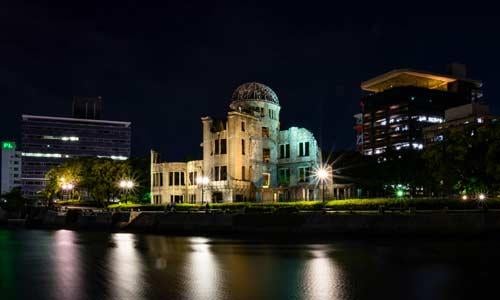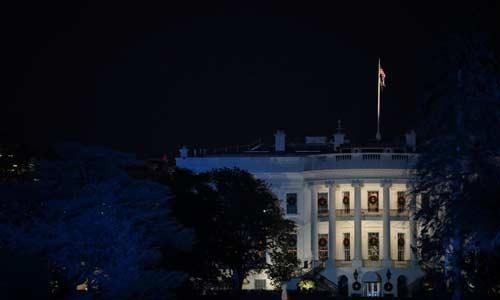Human-made sources of radiation have increased since the 1940s in the environments people live in and near.
While small amounts of radioactive material are naturally occurring, human activities have increased radioactivity in the environment for specific communities. Human-made sources of radiation have increased since the 1940s due to medical interventions, nuclear weapons testing, and accidental releases of radioactivity.
In the case of nuclear weapons, radiation can enter the environment throughout their life cycle. From the mining, processing, and shipping of raw materials to the building and testing of weapons, all the way to their decommissioning and the storage of nuclear waste, human health is at risk if communities come into contact with these materials. So even when these weapons of mass destruction are not used, they can still pose harm to the public’s health.
Uranium mining
During the mining and processing of the raw materials that go into nuclear weapons, workers may be exposed to radiation through uranium and its daughter products radium and radon. Inhalation or ingestion can increase the risks of lung and kidney cancer and other illnesses.
When uranium mill tailings (the waste from a processing plant) are not properly buried, they can release uranium into the local environment, including the water and food supply. And much of this uranium mining has occurred on Indigenous land in the United States: in the Navajo Nation alone, there have been 1,200 uranium mines on an area of land about the size of South Carolina—but no federally funded radiation poison centers. Health harms of uranium mining and mill tailings include nonmalignant lung disorders, lung cancer, and behavioral disorders such as anxiety and depression.
Nuclear weapons production
When building nuclear weapons there are lots of safety regulations and measures taken to protect the people living near nuclear facilities and the workers within such facilities. Unfortunately, safety measures can fail and labs can fail to create a culture of safety. For example, the Rocky Flats nuclear weapons fabrication facility in Colorado had a fire in 1957 that resulted in an atmospheric release of plutonium, causing harmful toxicants to blow into the facility and nearby community. This is much less likely to happen today with more safety regulations in place; lab accidents still happen at nuclear facilities, although not at this scale.
Nuclear weapons testing
Starting in 1945, the countries that possess nuclear weapons have conducted more than 2,000 nuclear tests, 500 of which were conducted aboveground. The United States alone conducted 1,032 nuclear tests between 1945 and 1992, more than any other country. During these tests, some of the radioactive materials mixed with dirt, dust, and water droplets and were carried by wind far from the detonation site–what is referred to as nuclear fallout. This radioactive material can be deposited over a large region, causing widespread harm to human health.
The way radiation enters the environment (called the environmental exposure pathway) can affect the way in which a toxicant enters the body (called the absorption pathway). This directly affects what diseases may occur later.
For example, iodine-131 in the fallout from a bomb test can follow wind, water, and soil environmental exposure pathways that deposit the iodine on nearby pastures, where it can be ingested by cows or goats. Iodine can then be absorbed into the thyroid glands of children who drink those animals’ milk—a human absorption pathway. Many studies on iodine-131 fallout focus on people aged 15 years or younger because they are more likely to ingest cow’s or goat’s milk. A 1997 National Cancer Institute study found that southwestern Utah schoolchildren exposed to milk contaminated by iodine-131 and iodine-133 had a mean thyroid dose of about 0.12 Gy, with a maximum of 1.4 Gy.
Shipping, storage, and disposal of radioactive materials
There is always a risk that radioactive materials can spill or otherwise spread into nearby communities while they are being shipped around the nation and the world. Cleaning the contamination that results can take decades and is often not a complete fix for the affected area.
Consider the Hanford Site in Washington State, where the plutonium for the US nuclear weapons program was produced.
This 600-square-mile facility is home to 54 million gallons of liquid or solid waste, much of it radioactive. The United States has engaged in a decades-long, $528 billion effort to remove the waste from myriad tanks before it can leach into the Columbia River.
This region was the homeland of several Indigenous tribes for centuries prior to Hanford, and many people continue to live in the region and downriver of Hanford. There are still buildings, facilities, and storage tanks that need to be demolished, decommissioned, and removed from the environment.
Health research and nuclear policy
The study of radiation exposure and absorption pathways can lead to meaningful policy change. For example, August 2023 marked the 60th anniversary of the Partial Test Ban Treaty, which banned nuclear weapons tests underwater, in the atmosphere, and in outer space. The authors of the treaty used community-driven research including the St. Louis Baby Tooth Study (discussed here ) as evidence of the need for such a ban, and the St. Louis study has inspired other baby tooth surveys in New York, the five Gulf Coast states, Canada, and Germany.
Related explainers

Understanding Radiation

How Radiation Interacts with the Human Body

Health Impacts of Radiation Exposure

The Language of Radiation: A Glossary
The Union of Concerned Scientists has worked on nuclear weapons-related issues for more than 50 years. Get involved here.





